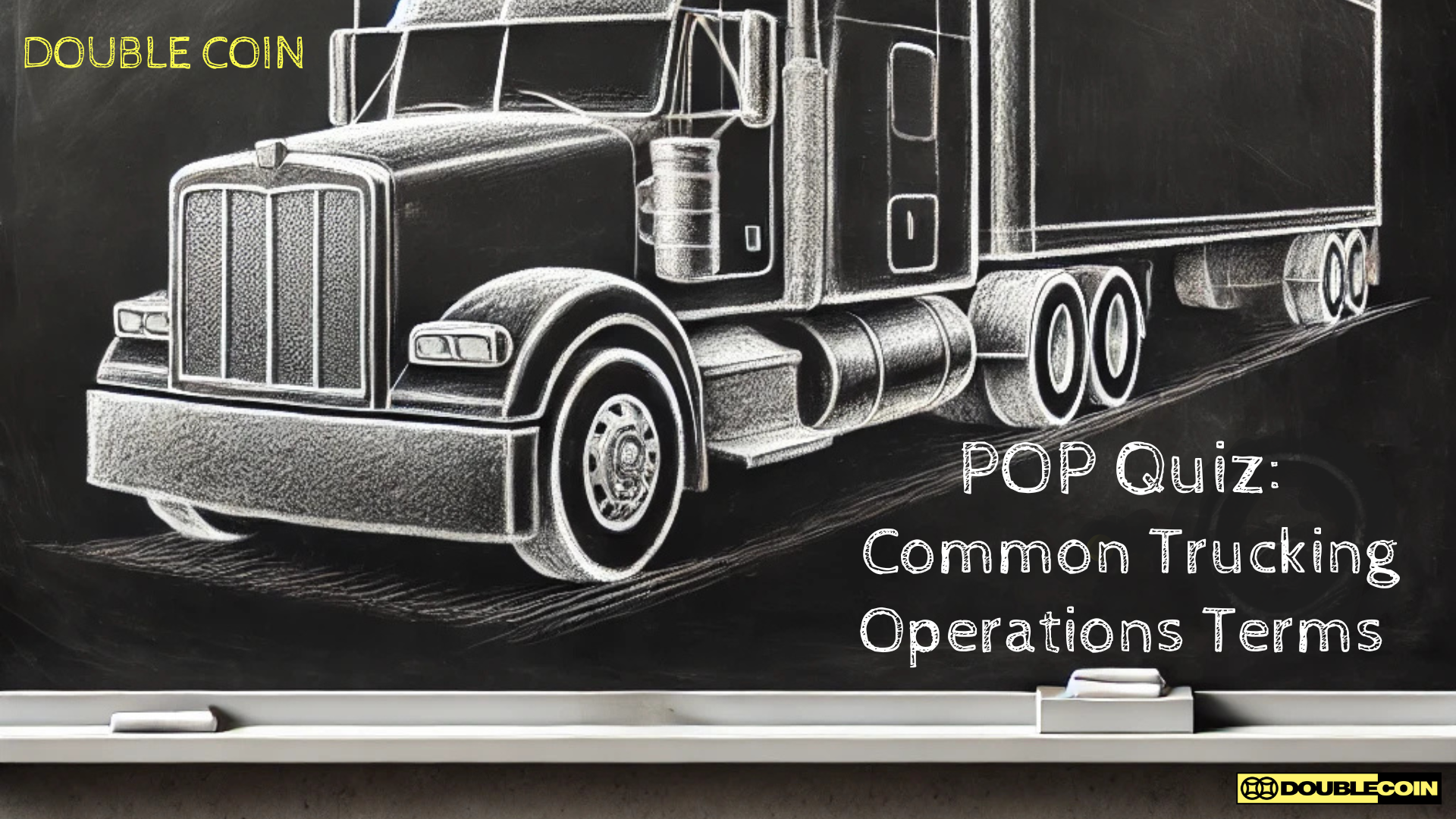
Understanding the language of the trucking industry is crucial for smooth operations, whether you’re a driver, dispatcher, or fleet manager. From licensing to regulations, here’s a breakdown of some common trucking terms:
CDL stands for Commercial Driver’s License. In the U.S., drivers must possess a CDL to operate commercial vehicles legally. There are three classes:
CLP stands for Commercial Learner’s Permit, which allows drivers to practice under supervision before acquiring a CDL.
CMV stands for Commercial Motor Vehicle. It refers to vehicles used for interstate commerce that meet specific weight and passenger capacity requirements. These vehicles often have a weight rating of 10,001 lbs. or more.
DC stands for Distribution Center. It’s a facility that bridges the gap between manufacturers and customers, distributing goods to retail stores.
FTL, or Full Truckload, refers to shipments that occupy an entire truck, traveling from point A to B with no other stops. It’s commonly used for large cargo deliveries.
LTL, or Less-Than-Truckload, refers to smaller shipments from various sources that share a single trailer. This cost-efficient method is ideal for non-urgent or smaller cargo.
HOS stands for Hours of Service, which regulates the amount of time a driver can be on duty. These regulations help ensure driver safety and compliance with the Federal Motor Carrier Safety Administration (FMCSA).
OEM stands for Original Equipment Manufacturer. The trucking industry’s major OEMs include Freightliner, Kenworth, Peterbilt, and Volvo. They provide both trucks and replacement parts.
O/O stands for Owner-Operator. An O/O is a driver who owns their own business and commercial vehicles, providing services independently.
OOS stands for Out of Service. Vehicles or drivers may be deemed OOS due to safety violations, equipment failure, or other infractions by the FMCSA.
OTIF stands for On-Time In-Full, a supply chain performance metric measuring how well suppliers deliver goods within agreed-upon windows and in full quantities.
P&D stands for Pick-up and Delivery. P&D drivers typically handle local deliveries, making multiple stops and interacting with customers daily.
Common Trucking Equipment Terms You Should Know
Understanding the various types of trucks and equipment used in the industry is equally essential. Here are a few terms to help you navigate:
ABS, or Anti-lock Braking System, helps drivers maintain control of their vehicles during emergency stops by preventing wheel lock-up.
APU stands for Auxiliary Power Unit, which provides energy for heating, cooling, and powering electronics without needing to idle the truck.
BEV stands for Battery-Electric Vehicle. These are powered solely by rechargeable batteries, producing zero emissions, unlike traditional diesel or gasoline-powered vehicles.
DEF, or Diesel Exhaust Fluid, is used in diesel engines to reduce harmful emissions. It helps convert nitrous oxide in exhaust systems into water and nitrogen.
GAWR stands for Gross Axle Weight Rating, the maximum weight an axle can safely support, including the vehicle’s components and cargo.
GVWR stands for Gross Vehicle Weight Rating, indicating the maximum weight a vehicle can safely carry, including its own weight and any cargo.
ICE stands for Internal Combustion Engine. There are two types—spark ignition engines and compression ignition engines, commonly used in both diesel and gasoline vehicles.
Common Trucking Technology Terms You Should Know
Technological advancements are revolutionizing the trucking industry. Here’s a look at some commonly used tech terms:
ADAS stands for Advanced Driver Assistance Systems, which use sensors and alerts to improve driver safety by warning of blind spots or potential lane departures.
AV stands for Autonomous Vehicle. These trucks use sensors and computing technology to operate without a driver, representing a new frontier in logistics.
ELD, or Electronic Logging Device, tracks a driver’s hours of service, vehicle miles, and engine data to improve compliance and communication.
TMS stands for Transportation Management System. It streamlines fleet operations by automating processes such as dispatching, tracking, and reporting.
Understanding these trucking operations terms can significantly enhance your knowledge of the industry. From licensing to equipment and technology, these key terms offer insight into how modern trucking companies like Double Coin Tires continue to evolve with safety, efficiency, and customer service in mind.
Double Coin tires deliver exceptional value for a wide variety of commercial applications, including trucking, construction, mining, ports and agriculture. Our goal is to provide valuable information for those working in these industries.
A huge THANK YOU to everyone who stopped by the Double Coin booth at #MATS2025! 🚛🔥 It was incredible connecting with so many trucking pros at the largest trucking show in North America. We appreciate your time, your questions, and your passion for the industry. Until next…
Twitter feed video.
On the road again…..
Twitter feed video.
Add this ID to the plugin's Hide Specific Tweets setting:


